
$1000 might sound like a lot of money for a camera, but it’s probably the least we’d recommend spending if you want to go beyond phone photography, especially as photography equipment is steadily getting more expensive. The picks on this list will give you more control than a phone and offer a more satisfying photographic experience.
At this price point, your options will be entry-level interchangeable lens cameras or larger-sensor compact cameras with built-in lenses. Compacts offer more control than a phone and a greater zoom range, but likely won’t offer a huge jump in image quality compared to the latest flagship phones (despite their typically larger sensors).
Meanwhile, an interchangeable lens camera won’t be as easy to carry around and comes with the added expense of lenses. However, they can make you feel even more involved in the photographic process, and the flexibility of swappable lenses will let you learn and grow into different types of photography as you develop your passion. They also feature much larger sensors than phones and the majority of compacts.
It’s worth noting that camera makers sometimes assume that beginners will stick with the basic ‘kit’ zoom that comes with the camera, so it’s worth checking whether a good selection of lenses is available (at a price you’re willing to spend) before deciding which brand’s system to buy into.
Our recommendations:
- Best camera under $1000: Canon EOS R10
- The better performer: Nikon Z50II
- The affordable kit: Sony a6100
- Best compact camera under $1000: Canon G7X III
- Best camera for content creators under $1000: Fujifilm X-M5
Best camera under $1000: Canon EOS R10
24MP Dual Pixel APS-C CMOS sensor | 4K/30p video (60p with crop) | 15fps shooting (23fps with e-shutter)
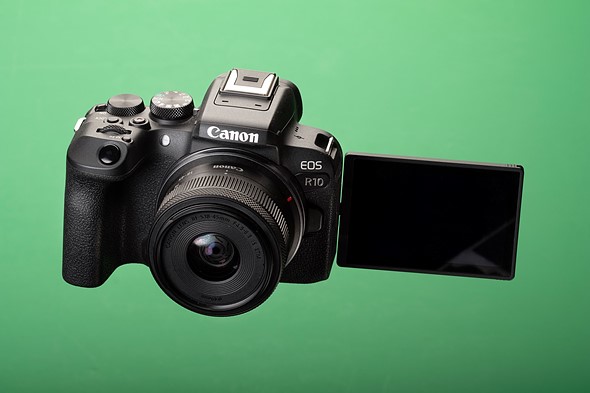 |
| Photo: Shaminder Dulai |
What we like:
- Capable stills and video camera
- Simple, effective AF in stills
- Relatively easy-to-use
What we don’t:
- Video autofocus is less effective than stills
- Mediocre battery life
- Few sensible RF lens choices
There are a few things that earn it the top spot on this list. The first is its stand-out usability, with dual top-plate dials for controlling exposure settings and a joystick to control its very capable autofocus system. It also has a decent selection of lenses; third parties like Sigma and Tamron have stepped in to round out the selection of primes and higher-end zoom lenses available for it, so you have several good options for moving beyond the kit lens that came with it, something that isn’t necessarily true with Nikon’s system.
Overall, the EOS R10 is a very capable camera for its price point, and offers a lot of room to grow for those starting out in photography, especially now that there’s a reasonable selection of APS-C lenses for it.
See Canon EOS R10 studio scene
The other options
While we much prefer the higher level of control that the EOS R10 provides, the less expensive Canon EOS R50 may also be worth a look if you’re extremely budget-conscious but still want to stay in the Canon ecosystem. It has fewer control points – most notably, it misses out on the EOS R10’s joystick – and it loses out on features such as 4K/60p video capture and an articulating display, but it’s still pretty capable.
We don’t recommend the cheaper still EOS R100. It’s based on a previous generation of technology, so it’s slower and has less sophisticated autofocus.
The better performer: Nikon Z50II
20.9MP APS-C sensor | Subject recognition AF | Full-width 4K video up to 30p
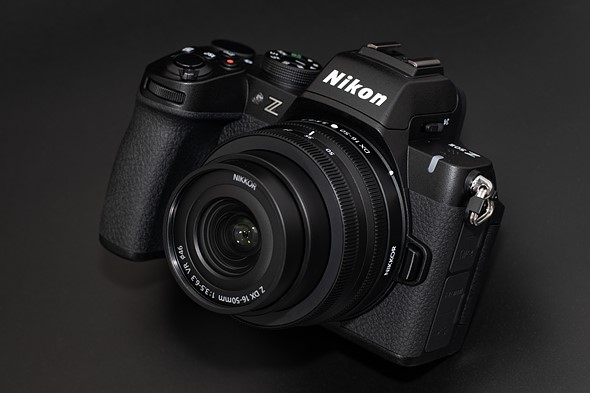 |
| Photo courtesy Nikon |
What we like:
- Twin command dials
- Simple tracking AF w/ subject recognition
- Strong video specs
What we don’t:
- Weak battery life
- Limited zoom lens selection
- Non-stabilized sensor limits video
The Z50II makes a case for being the best pick for beginners, thanks to a simple and mostly reliable AF system with automatic subject detection. However, while plenty of prime lenses are available, Nikon has not yet allowed any bright zooms, limiting your upgrade options compared with its rivals.
What about the Z fc?
Nikon’s Z fc is a stylish camera based on the original Z50, which means it has the same sensor as the Z50II. We like it a lot, but the autofocus on the Z50II is such a marked improvement that it’s hard to recommend picking up a Z fc at this point – you can read our full comparison between the two cameras here. If you have a strong attachment to the Z fc’s aesthetics, your best option is probably holding off for a bit to see if Nikon updates the Z fc. If that’s not an option, see if you can get it on sale or used.
The affordable kit: Sony a6100
24MP APS-C sensor | Hybrid AF with Real-time Tracking | 4K video capture
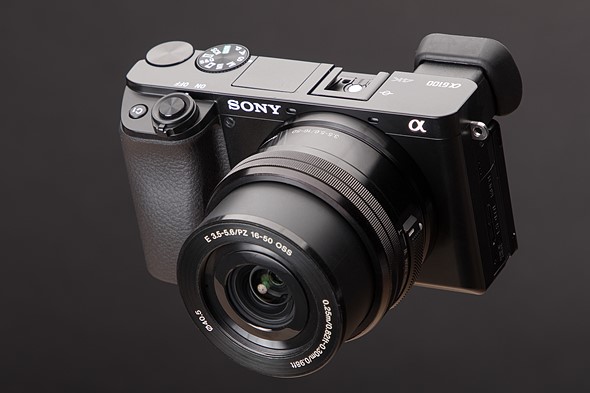 |
The Sony a6100 offers a lot of power in a compact, well-priced body. The 16-50mm power zoom isn’t the best, though. Photo: Richard Butler |
What we like:
- Excellent autofocus system
- 4K/30p video recording
- Tilting touchscreen LCD
What we don’t:
- Less robust build quality
- Rolling shutter ‘jello effect’ present in 4K video
- Crop when recording 4K/30p video
It was a very capable and affordable camera when it was launched several years ago, offering some of the best autofocus around and a wide selection of lenses. The latter part is still an advantage, but many competitors’ autofocus systems are now on par with the a6100’s. However, it’s still worth considering if you want to get both a camera body and a decent prime lens for under $1,000.
The a6100 is the most basic model in the a6000-series and doesn’t feel quite as robust as its step-up siblings. It offers a lower-resolution electronic viewfinder, and control dials that are both thumb-operated. Its touchscreen flips upward 180-degrees for easy selfie framing and vlogging. It also uses Sony’s old menu system, which can be a chore to work with.
See the Sony a6100 studio scene
Best compact camera under $1000: Canon G7X III
20MP Type 1 Stacked CMOS sensor | 24-100mm equiv. F1.8-2.8 lens | 4K/30p video capture
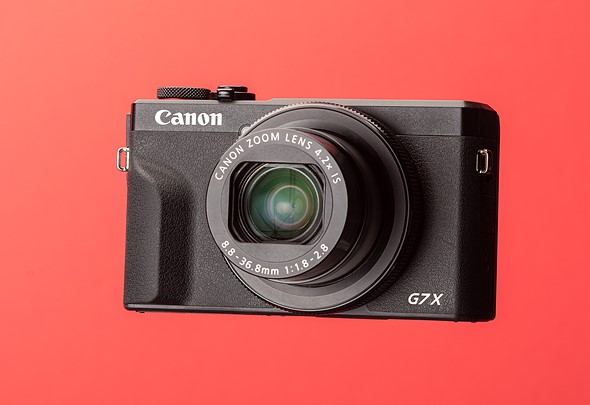 |
| The PowerShot G7X III can deliver excellent image quality, backed up by good (though not great) autofocus |
What we like:
- Nice grip and well-placed controls
- 4K/30p recording with live streaming to YouTube
- Fast burst shooting
What we don’t:
- Lens is soft at wide-angle
- Limited battery life
- Contrast-detect only autofocus
The Canon PowerShot G7X III is the last in what used to be a popular style: the pocketable enthusiast photographers’ compact, with a relatively large Type 1 20MP sensor and bright zoom lens. Canon has added features to make it more vlogging-friendly, but the clicking control wheel gives a satisfying, hands-on shooting experience.
A note on availability: the PowerShot G7X III has been difficult to get for a while, but Canon has recently stated that it’s starting production back up and is working on filling backorders. Still, getting your hands on one may require some patience.
Read our Canon PowerShot G7X III review
See the Canon PowerShot G7X III studio scene
Best camera for content creation: Fujifilm X-M5
26MP APS-C BSI CMOS sensor | Fully articulated 3″ LCD | 6.2K 3:2 video up to 30p
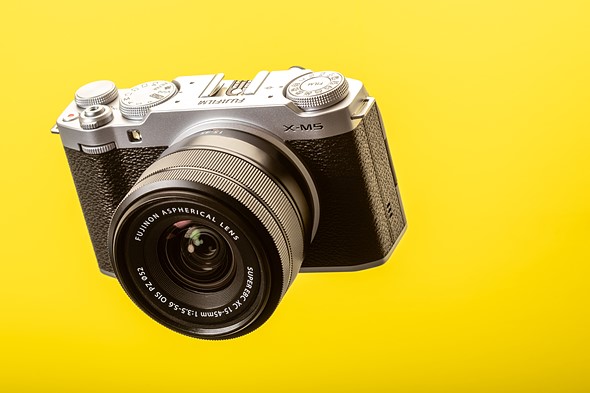 |
What we like:
- Great JPEG colors with dedicated dial
- Solid selection of vlogging features and UI
- Good level of direct control
What we don’t:
- No viewfinder
- AF tracking performance isn’t the strongest
- Unstabilized sensor
It’s aimed at creators taking pictures and video for the web, with a suite of vlogging features that let you shoot video that’s ready to upload as soon as you transfer it to your phone. It also has a dial for easily switching between ‘Film Simulations,’ Fujifilm’s much-loved color modes, and the full suite of stills features from larger, more expensive models – minus a viewfinder. Its support for X-mount lenses also gives you access to the most complete range of APS-C lenses, no matter what journey you’re on.
See the Fujifilm X-M5 studio scene
What if I only vlog?
If you plan to shoot more videos than photos, it’s worth considering the Canon PowerShot V1. It’s a compact camera built for vlogging with its integrated 16-50mm equiv. F2.8-4.5 lens, large (for a compact) Type 1.4 (18.4 x 12.3mm) sensor, complete with optical image stabilization and an ND filter. While we don’t think it offers an especially enjoyable photography experience, features like a built-in fan for cooling, headphone and microphone ports, very usable stabilization and the ability to shoot 4K60p with a 1.4x crop make it a quite powerful video camera for its size.
Click here to read the Canon PowerShot V1 review
If you only care about vlogging, and want an even more pocketable option, the DJI Osmo Pocket 3 comes in under $1000 and can’t be beat when it comes to stabilization thanks to its built-in gimbal. That, and the ability to sync with DJI’s wireless microphones, earn it the top spot in our dedicated vlogging buying guide.
Click here to read our Best Cameras for Vlogging buying guide
Why you should trust us
This buying guide is based on cameras used and tested by DPReview’s editorial team. We don’t select a camera until we’ve used it enough to be confident in recommending it, usually after our extensive review process. The selections are purely a reflection of which cameras we believe to be best: there are no financial incentives for us to select one model or brand over another.
